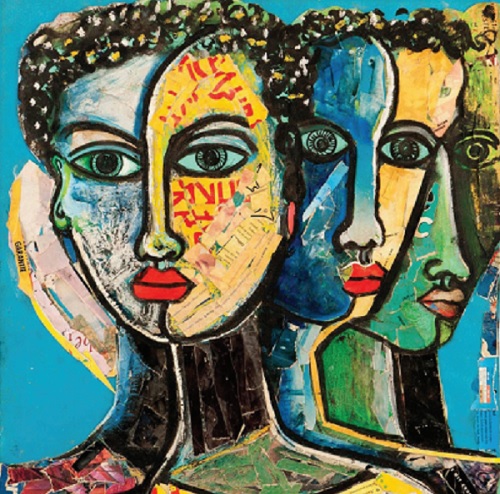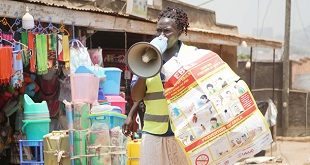
Metaphors of Buganda or images of exploitation?
Kampala, Uganda | DOMINIC MUWANGUZI | A current exhibition of Geoffrey Mukasa’s works at AKA Gallery in Kamwokya, Kampala relieves his bold and controversial portrayal of the human form, especially the female. A painting by Geoffrey Mukasa would never be complete without these women. “In her, I find myself,” the artist who died in 2011 proudly asserted about his apparent preoccupation.
The women were invariably voluptuous, with vivid outlines of their well-endowed busts dominated by breasts that appear to almost pop out of the canvas. These he represented simply, almost likefully round and ripe oranges.
Critics demonise the artist, accusing him of objectifying the woman. A famous example they point at is his nude series that depict women naked with their elbows tactfully covering the private parts. They say he exploits the woman for personal gratifications and point at his nude series and his emphasis on the female bust form. He also stresses the nose and eyes of the subjects in his paintings with thick purple and blue glazes. While the nose is neatly done, the eyes are often popping out terrifyingly.
But Mukasa, in defense, often said women metaphorically represent beauty, power and strength of the African woman. His fixation with their form was an expression of his belief that life revolves around women. He also believed that there is not greater symbol of individual human thoughts and feelings than the face.
In life, Mukasa shared a strong bond with one woman – his mother. Though he grew up with both parents, it was his mother that had a big impact on his life. It was she who sent him on errands at the Buganda chiefs’ residences on Bulange-Mengo hill. Here, he observed women going about their day to day duties. It was this rhythm of the women duties that fascinated him and later played out in his oil paintings.
He viewed his art as veneration, in the manner of the idealistic illustrations of Greek fairy-tale paintings that sometimes portrayed women as gods floating in the air and consorting in spiritual realms. So Mukasa’s women are often depicted wearing the gomesi (Buganda official dress) and posing with men and children a symbol of celebrating family life and union.
The artists had another fixation – with the African cockerel. For him this was equally a figurative representation of the cultural significance and majestic poise of the bird. This symbolism too is derived from the Baganda- a tribe from Buganda of which the artist belonged- cultural norm that states that the cock has authority and power. The cock is majestic; moving with pride. This inspires the analogy of the Kabaka as a cock – a supreme being.
More so, in Buganda tradition, eating chicken was a preserve for the male. As such, the cock is similarly a symbol of the patriarchal nature of Buganda kingdom. In light of this symbolism, Mukasa’s paintings showcase recurring scenes where a cock is being embraced by male figures. This is to underline the relationship between the bird and the men.
Mukasa’s dwelling on such symbolism qualifies his work as a cultural and social archive. The artist, in spite of the different confrontations from critics that challenged his work as a replication of Matisse or Picasso, was a radical in style. He was a breakaway artist who did not conform to the western modernist procedure of art making. If he did, his style of integrating traditional African themes of day to day life and styles of art making made his art a perfect podium of cultural appreciation.
*****
An exhibition of Geoffrey Mukasa’s works is ongoing at AKA gallery located on Bukoto Street, Kamwokya-Kampala next to Goethe Zentrum and Alliance Francaise Kampala offices.
 The Independent Uganda: You get the Truth we Pay the Price
The Independent Uganda: You get the Truth we Pay the Price



